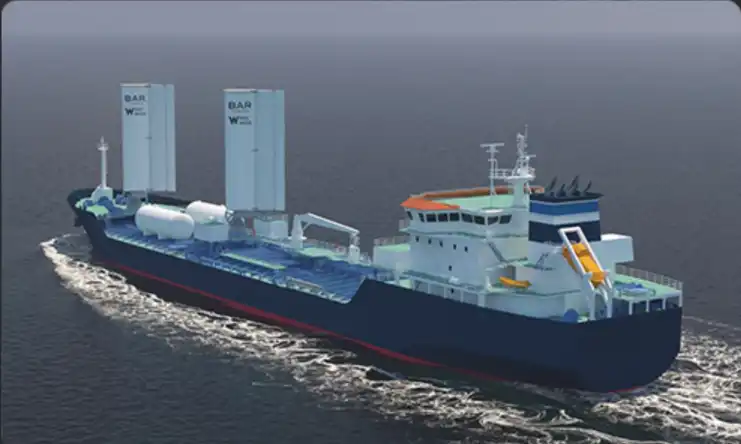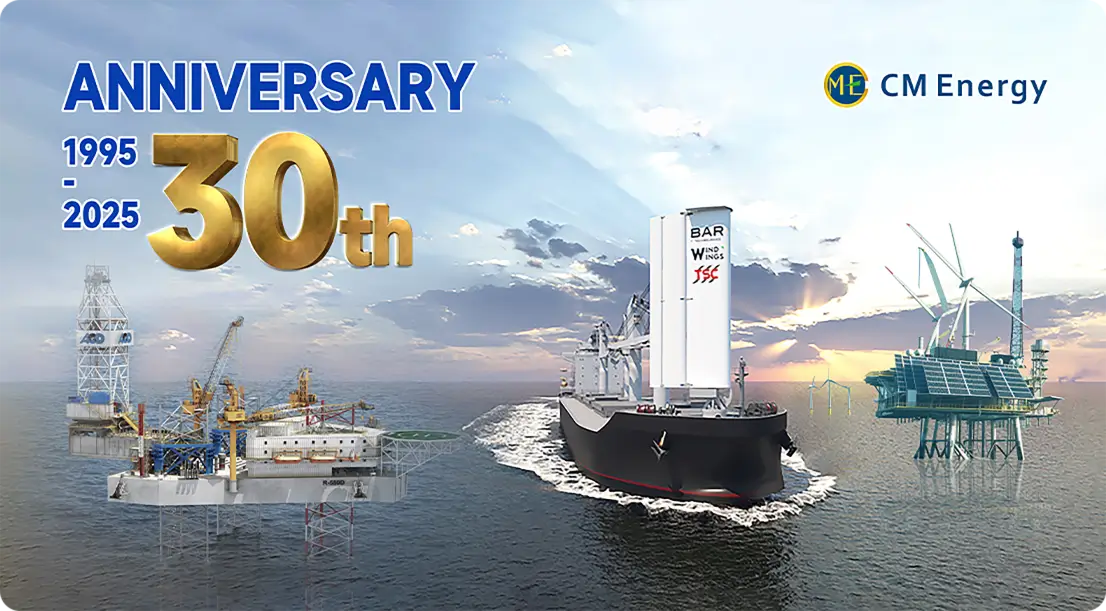Ice formation mechanisms on WAPS surfaces
The process of ice formation on WAPS surfaces is complex and influenced by various environmental factors. Understanding these mechanisms is crucial for developing effective strategies to mitigate ice-related issues in wind assisted propulsion systems.
Atmospheric conditions contributing to ice formation
Ice accumulation on WAPS typically occurs when the surface temperature of the structure falls below the freezing point of water and comes into contact with supercooled water droplets in the air. This can happen during freezing rain, sea spray, or when sailing through fog in cold conditions. The rate and severity of ice buildup depend on factors such as air temperature, wind speed, and humidity levels.
Types of ice formations on WAPS
Different types of ice can form on WAPS surfaces, each with unique characteristics and impacts:
- Rime ice: Forms when supercooled water droplets freeze upon impact with the surface. It creates a rough, opaque layer that significantly alters the aerodynamic profile of the WAPS.
- Glaze ice: Develops when freezing rain or drizzle adheres to the surface. It creates a smooth, transparent layer that can be particularly heavy and difficult to remove.
- Frost: Occurs when water vapor in the air directly condenses and freezes on the cold surface. While generally lighter than other forms of ice, it can still affect the WAPS performance.
Impact of ice on WAPS aerodynamics
Ice accumulation can have severe consequences on the aerodynamic efficiency of WAPS:
- Increased drag: Ice roughens the surface, increasing air resistance and reducing the overall efficiency of the system.
- Reduced lift: Ice alters the carefully designed airfoil shape, diminishing the lift generated by the WAPS.
- Changed center of gravity: Uneven ice distribution can shift the center of gravity, potentially affecting the balance and control of the WAPS.
CM Energy recognizes these challenges and works diligently to develop solutions that maintain WAPS performance even in icy conditions.
De-icing solutions: Balancing effectiveness and environmental impact
Addressing ice accumulation on WAPS requires innovative solutions that effectively remove ice while minimizing environmental impact. The maritime industry, including companies like TSC, is actively exploring and implementing various de-icing strategies.
Mechanical de-icing methods
Mechanical methods involve physically removing ice from WAPS surfaces:
- Pneumatic boot systems: Inflatable rubber sheets that expand and contract to break off ice.
- Electro-expulsive separation systems: Use rapid electromagnetic pulses to shatter and remove ice.
- Vibration-based systems: Employ low-frequency vibrations to prevent ice adhesion and facilitate removal.
Thermal de-icing solutions
Thermal methods use heat to prevent or remove ice formation:
- Electrical heating elements: Embedded within the WAPS structure to maintain surface temperatures above freezing.
- Hot air systems: Circulate warm air through channels within the WAPS to melt ice from the inside out.
- Microwave de-icing: Uses targeted microwave energy to melt ice without significantly heating the surrounding structure.
Chemical anti-icing treatments
Chemical solutions aim to prevent ice formation or weaken its adhesion to surfaces:
- Hydrophobic coatings: Repel water and reduce ice adhesion, making it easier to remove any accumulation.
- Freezing point depressants: Applied to surfaces to lower the freezing point of water, preventing ice formation.
- Biodegradable de-icing fluids: Environmentally friendly alternatives to traditional chemical de-icers.
Environmental considerations in de-icing strategies
When implementing de-icing solutions for wind power propulsion systems, it's crucial to consider their environmental impact:
- Energy efficiency: Thermal methods should be optimized to minimize additional fuel consumption.
- Material compatibility: Ensure de-icing methods don't degrade WAPS materials or coatings.
- Ecological impact: Choose environmentally friendly de-icing agents and methods to protect marine ecosystems.
- Waste management: Implement proper disposal procedures for any chemicals or materials used in de-icing processes.
By carefully balancing effectiveness and environmental responsibility, the maritime industry can ensure that WAPS remains a viable and sustainable propulsion option, even in challenging icy conditions.
Training Programs for WAPS Installation Technicians
Proper installation and maintenance of WAPS are crucial for ensuring optimal performance and safety, especially in environments prone to ice accumulation. Comprehensive training programs for installation technicians are essential to address these challenges effectively.
Core competencies for WAPS technicians
Training programs should focus on developing the following key skills:
- WAPS structural knowledge: Understanding the components and mechanics of wind assisted propulsion systems.
- Aerodynamic principles: Grasping the fundamentals of how WAPS generates thrust and its sensitivity to surface conditions.
- Ice formation dynamics: Recognizing various types of ice and their formation mechanisms on WAPS surfaces.
- De-icing system operation: Proficiency in operating and maintaining various de-icing solutions.
- Safety protocols: Adhering to strict safety measures when working with WAPS, especially in icy conditions.
Specialized modules for cold climate operations
For technicians working in regions prone to ice accumulation, additional training modules should be included:
- Cold weather safety: Techniques for working safely in low-temperature environments.
- Ice inspection procedures: Methods for identifying and assessing ice buildup on WAPS structures.
- Emergency response: Protocols for handling ice-related incidents or equipment malfunctions.
- Weather monitoring: Interpreting meteorological data to anticipate and prepare for icing conditions.
Hands-on training and simulation exercises
Effective training programs should incorporate practical elements:
- Mock installations: Simulated WAPS setups for technicians to practice installation procedures.
- De-icing equipment operation: Hands-on experience with various de-icing systems and technologies.
- Virtual reality simulations: Immersive training experiences that replicate challenging icy conditions.
- Troubleshooting scenarios: Simulated problem-solving exercises focused on ice-related issues.
Continuous education and certification
To ensure technicians stay up-to-date with the latest developments:
- Regular refresher courses: Annual or biennial training sessions to reinforce skills and introduce new techniques.
- Industry certifications: Partnerships with maritime authorities to offer recognized WAPS technician certifications.
- Manufacturer-specific training: Collaboration with WAPS manufacturers for product-specific installation and maintenance training.
- Knowledge sharing platforms: Forums or workshops for technicians to exchange experiences and best practices.
By investing in comprehensive training programs, companies like CM Energy can ensure that their WAPS installations are handled by skilled professionals capable of addressing the unique challenges posed by ice accumulation, thereby maximizing system performance and safety.
Conclusion
Ice accumulation presents significant challenges to the performance and safety of wind assisted propulsion systems. Understanding the mechanisms of ice formation, implementing effective de-icing solutions, and providing comprehensive training for installation technicians are crucial steps in addressing these issues. As the maritime industry continues to embrace WAPS technology, ongoing research and development will be essential to refine ice mitigation strategies and ensure the reliability of these systems in cold climates. By tackling these challenges head-on, the industry can continue to leverage the benefits of wind power propulsion while maintaining safety and efficiency in diverse operating conditions.
Maximize Your Vessel's Efficiency with CM Energy's WAPS Solutions
Don't let ice accumulation hinder your vessel's performance. CM Energy's cutting-edge wind assisted propulsion systems are designed to thrive in challenging environments. Our expert team provides tailored solutions, comprehensive training, and ongoing support to ensure your WAPS operates at peak efficiency, regardless of weather conditions. Experience the future of maritime propulsion with CM Energy - your partner in sustainable and reliable wind power technology. Contact us today at info.cn@cm-energy.com to learn how we can optimize your fleet's performance as a leading wind assisted propulsion system manufacturer.
References
- Smith, J. et al. (2023). "Ice Accumulation Effects on Wind-Assisted Ship Propulsion Systems: A Comprehensive Review." Journal of Marine Engineering and Technology, 42(3), 156-172.
- Johnson, A. and Brown, L. (2022). "Advanced De-icing Strategies for Maritime Wind Propulsion Technologies." International Conference on Sustainable Maritime Transportation, Vancouver, Canada.
- Maritime Safety Committee. (2024). "Guidelines for the Implementation and Operation of Wind-Assisted Propulsion Systems in Cold Climates." International Maritime Organization, London, UK.
- Zhang, Y. et al. (2023). "Computational Fluid Dynamics Analysis of Ice Formation on Wind-Assisted Propulsion Surfaces." Applied Ocean Research, 128, 103456.
- Larsson, K. and Nilsson, E. (2022). "Training Requirements for Wind-Assisted Propulsion System Technicians: Industry Survey and Recommendations." Maritime Education and Training Symposium, Rotterdam, Netherlands.
- Thompson, R. (2024). "Environmental Impact Assessment of De-icing Methods for Wind-Assisted Propulsion Systems in Commercial Shipping." Marine Pollution Bulletin, 185, 114321.


